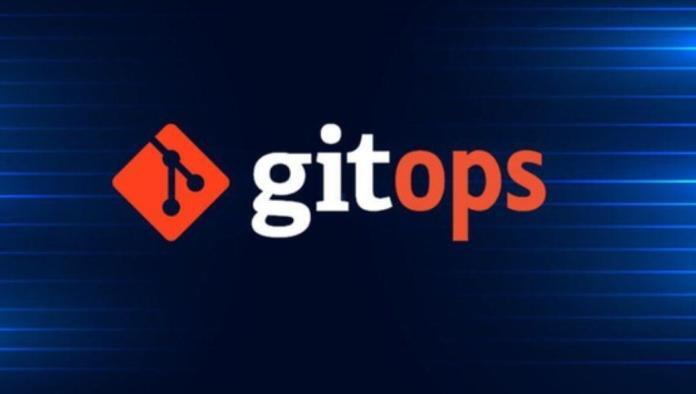Developers spend too much time manually managing infrastructure and reviewing changes. This distracts from innovation.
IT operators also lose nights and weekends reacting to alerts and incidents caused by configuration drifts across environments.
Deploying applications via managed workflows rather than one-off scripts optimizes reliability, compliance, and business continuity.
GitOps promises a better approach using Git version control and continuous automation to declarative manage infrastructure.
Teams benefit from peer reviews and auditing control while automation handles tedious deployment tasks at scale.
AWS Cloud Analytics offers services to realize a GitOps workflow for both traditional and modern applications.
Core GitOps Components
Git version control system
GitOps relies on the ubiquitous Git version control system to drive change management. Git’s best practices around peer review integrated with GitHub or AWS CodeCommit improve transparency.
Branching strategies also aid collaboration between contributors across features or application domains. Changes are captured incrementally as commits ease rollback.
Continuous integration/continuous deployment (CI/CD)
CI/CD automation constantly builds, tests, and releases application changes by triggering Git commits/merges to notify deployment tools.
Instead of manual steps, the continuous integration component handles compiling, testing, and code scanning to validate changes.
If passing, continuous deployment services like AWS CodeDeploy then bundle and ship the application update to lifecycle environments automatically.
Infrastructure as Code (IaC)
IaC templates like YAML configurations for Kubernetes pods in AWS EKS or HashiCorp Terraform modules for networking declaratively define the desired infrastructure state.
Keeping these under Git version control ensures peer review for infrastructure changes too.
IaC then automatically converges real environment state to match Git history providing desired infrastructure consistency.
Key Automation Use Cases
Deploying application code changes
Instead of developers FTPing files or running one-off scripts, GitOps services like AWS CodePipeline listen for Git commits then handle build, test, and deploy phases automatically on code changes.
Automating application deployment this way increases velocity and reliability freeing up developer time.
Maintaining infrastructure configurations
Rather than clicking around UIs to manage resources, GitOps relies on code review of infrastructure templates before auto-deploying any approved changes to environments.
Tools like AWS CloudFormation simplify and standardize real-world infrastructure management, applying version control-based rigor.
Enforcing security, and compliance policies
Checkov, TfSec or architecture analysis tools injected into CI/CD pipelines validate IaC blueprints and adhere to security controls and compliance needs.
This bakes in validation upfront, preventing issues before provisioning.
Policy as Code approaches then continues monitoring and self-healing configured infrastructure throughout the lifecycle via GitOps.
Securing Access and Data
Robust access controls and data encryption are crucial for security in the cloud. AWS offers a range of services like IAM, KMS, CloudHSM, and secrets manager to manage access and protect data.
Automating policies, and roles and granting least privilege access minimizes attack surface area.
Regular key rotation via automation ensures credentials remain secure minimizing risk from lost keys.
Streamlining access revoke for employees who switch teams or leave the company is also important.
Finally, enabling encryption both in transit with SSL and at rest for databases, object storage, and messaging infrastructure ensures regulatory compliance and mitigates insider threats.
Cost Optimization
Continuously optimizing infrastructure costs allows for stretching budgets further. Tagging resources appropriately aids the categorization of spend visibility.
Automated hourly shutdown of non-production environments eliminates waste.
Monitoring tools that trigger the right sizing of instances, databases, and queues based on lower usage at certain times of day or periods in the product cycle further optimize spending.
Purchase saving plans like AWS reserved instances where applicable, and allocate budgets with alerts on overruns to control unexpected costs.
Performance Testing
While new features pass function tests, load, and performance testing early in the lifecycle ensures good end-user experiences. Injecting open-source load generation tools as part of the CI/CD pipeline is useful for creating production-like workloads.
These simulated tests identify bottlenecks with infrastructure sizing or application code under high concurrency before subjecting real users.
Automated injection also provides standardized ways for teams to execute performance tests reducing friction.
Review test metrics like response times and error rates as part of QA gates before permitting downstream environment promotions.
Failure Testing
While infrastructure redundancy and fault tolerance mechanisms help protect against most outages, regularly injecting failures helps prepare for worst-case scenarios.
Choose engineering techniques like randomly shutting down container instances or triggering latencies to simulate potential production issues.
This proactively validates recovery procedures instead of learning when users are impacted.
Start small by injecting faults into pre-production, and ramp up carefully with automation to test production resiliency.
Continually expand the toolbox of failure scenarios and monitor system behaviors when subject to turbulent conditions.
Backup and DR
Data protection against catastrophic failures requires both backup and disaster recovery strategies.
Automating periodic backups from production databases, object stores and message queues to S3 or Glacier provides durable archival history.
Orchestrating regular test restores from backups to QA environments validates recovery integrity.
Maintaining standby DR sites in alternate regions with occasional fail-over testing ensures business continuity when entire regions go down.
Automation around networking changes and DNS routing helps reduce DR switchover latency.
Log Analysis
Centralized logging and monitoring provide situational awareness for system health.
All applications and infrastructure components should automatically forward streams to CloudWatch Logs or third-party SIEM tools.
Establish dashboards, saved queries, and alarms based on trends, anomalies, and errors detected in logs. Reducing logging and tracing verbosity increases signal over noise.
Correlate metrics across infrastructure tiers to isolate root causes faster.
Continually refine log analytics and tune alarm thresholds to minimize false positives while triggering early warnings.
Overcoming Common Challenges
Avoiding Increased Complexity
It is easy with GitOps pipelines made up of numerous automated infrastructure and deployment components to end up with overly elaborate and confusing implementations themselves.
This can ironically reduce reliability instead, especially if operations teams lack familiarity with maintaining such architectures internally when issues inevitably crop up.
Resist overengineering by keeping the environmental principles simple. Plan to evolve complexity gradually only as warranted by demonstrable benefits.
Monitoring and Debugging Considerations
Related to complexity traps, the highly automated nature of GitOps workflows warrants investing in stellar serviceability, logging, and monitoring to track provisioning and application health.
Without robust dashboards providing system-wide visibility at a glance, operators lose sight quickly as changes occur rapidly. And with so many components integrated – from Git hooks committing config updates to CI/CD services firing to IaC tools templating cloud resources – debugging root causes requires tracing issues to source through correlation IDs.
Change Management Culture Shift
Developers and infrastructure engineers transitioning to GitOps-managed workflows from prior manual approaches require a culture shift around collaboration and accountability.
Merging changes now impact more teams through broader environment automation. Peer code reviews must become a valued habit.
There may be some initial reluctance to trust automation coming from hands-on admins. Win confidence through demonstrations then smaller scoped adoptions.
Location Targeting and Regional Nuances
For global organizations, targeting automated GitOps deployments across geographic regions requires careful planning and handling of regional differences.
Governing infrastructure templates and configuration for reuse yet allowing regional customization where necessary e.g. around data residency finds balance.
Monitor automation rollout to surface tuning needs based on location infrastructure nuances. Gradual regional expansion lowers risk.
Handling Stateful Services
Pure GitOps theory favors stateless infrastructure for easily reproducible environments using declarative setup scripts. Yet legacy databases, queues and other stateful services still underpin applications.
Special handling like snapshot backups integrated into change workflows make these coexist more smoothly alongside GitOps principles for brownfield modernization initiatives balancing greenfield ideals with practicalities.
Onboarding and Skill Building
Adopting GitOps end-to-end relies on cross-team collaboration from developer feature branches through QA environments and securing production infrastructure.
Provide learning resources and hands-on labs allowing each role to gain fluidity with considerations beyond their traditional scope.
Champion documentation and modular configurations aiding on-boarding of new hires as well.
Plan to level up collective GitOps skills over time through demos and informal group troubleshooting postmortems.
Does a GitOps approach leveraging AWS’ array of automation services seem appealing to increase your application deployment and infrastructure reliability?
What current pain points seem most acute that such practices could improve?
Which tooling seems the best fit and what incremental steps will you look at first?
You may also like,








